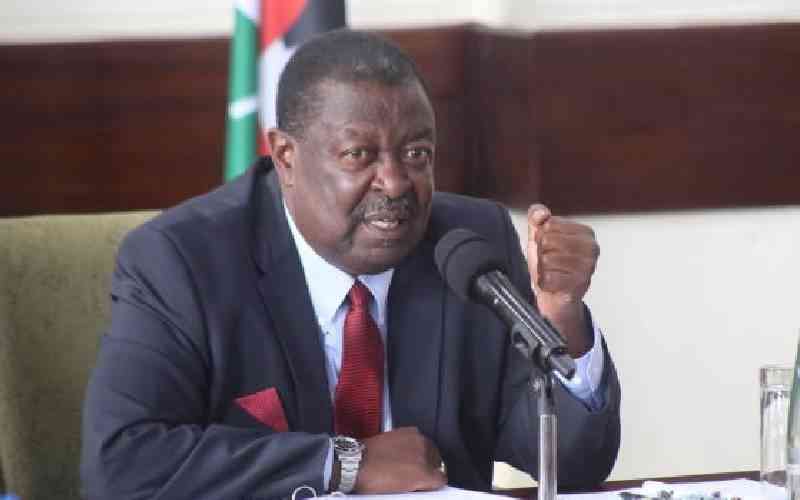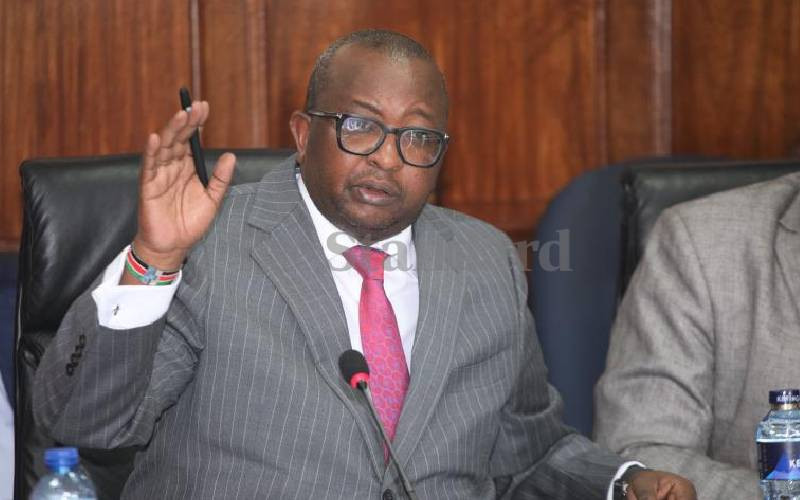The last four years of President Kenyatta’s life saw many Cabinet ministers and allies turn to exploiting the nation’s resources in a pattern that would be repeated under future regimes. In the second weekend of our serialisation of CHARLES HORNSBY’s book, we look at the looting in these turbulent years.
By CHARLES HORNSBY
Ten years into independence, Kenya was now a place of increasing corruption and inequality. Civil servants enthusiastically exploited the opportunity that the Ndegwa Report (1971) had given them to engage in business. The ‘action’ was now in resource extraction: poaching, charcoal and mining.
With the support of senior Government figures, Kenya’s abundant wildlife was slaughtered for the export of ivory and skins to the Middle and Far East. In mid-1973, at least 500 elephants were killed legally each month.
However, receipts in destinations such as Hong Kong suggested that at least 345 tonnes of ivory had been exported from Kenya in 1973, indicated the death of at least 15,000 elephants in a year, three times the official number.
There were wide discrepancies between estimates of the number of elephants left, from 150,000 to only 40,000. Ten thousand rhinos were killed during 1973–9, 80 per cent of the remaining population. Sport hunting was still legal, but in 1973, Chief Game Warden John Mutinda finally withdrew all elephant-hunting licences. Western nations’ concern over poaching was rising, with television reports and articles devoted to Kenya’s problem and its causes in State corruption.
There were high-profile arrests, including a Somali picked up with the tusks of 525 elephants in his baggage en route to Hong Kong.
Ivory exports
Eventually, Tourism Minister Juxon LM Shako banned ivory export by anyone except the Government in August 1974.
However, exports continued.
One problem was that the Kenyatta family itself was implicated in poaching and ivory exports. Margaret Kenyatta, Kenyatta’s daughter, was chairman of the United African Company, one of at least ten companies exporting ivory despite the ban. Ivory could earn Sh300 (US$36) per kilogramme, making one elephant worth thousands of dollars.
Other valuable items included zebra pelts (5,000 of these animals were shot illegally within 320 miles of Nairobi in six months during 1975) and colobus monkey skins.
In 1975, two men were found in possession of 26,000 colobus monkey skins (more than the total remaining population today).
However, dealers could buy both police inaction and the needed documentation, of which there was an inexhaustible supply. The monkey skin owners were acquitted after they produced ‘valid’ permits.
It was widely believed that much of the poaching that decimated the elephant and rhino populations was organised and carried out by the Ministry of Tourism and Wildlife. An expatriate official identified both assistant ministers — one being JM Kariuki — as buying ivory direct from game department headquarters for export. There were later suggestions that officials, police sharpshooters and the Kenyatta family were involved in a vertically integrated poaching cartel.
Stay informed. Subscribe to our newsletter
A Samburu MP alleged in Parliament that there were in fact very few poachers outside the ministry. In 1976, Parliament established a Select Committee to probe malpractices at the ministry, but nothing came of it in the face of State obstruction.
In May 1977, sport hunting was banned. However, the loss of hunting revenue damaged the ability of the ministry to combat poaching.
Bizarrely, Mau Mau veterans, denied most forms of recompense for their losses, had been allowed to poach since the 1960s, through the issue of ‘collectors’ permits’, which allowed them to carry as much ivory as they wished, under the polite fiction that it was of Mau Mau vintage. These permits were finally cancelled in 1977 under pressure from environmentalists. In the same year the African elephant was listed under Appendix II of the Convention on International Trade in Endangered Species (CITES).
Destruction of Kenya’s tree cover, soil erosion and changing rainfall patterns also became public issues. The felling of trees for land settlement and the production of charcoal were particular problems. Charcoal was now worth K£1,000 per tonne in the Middle East, and 80,000 tonnes a year was exported by 1975. Eventually, after dockworkers refused to load more ships, the Government was forced to introduce a total ban on charcoal exports, to replace the partial ban in force (which meant that only senior figures such as PCs could carry out the trade).
Kenyatta’s fading grip made corruption both easier and safer. Civil servants’ freedom to conduct business allowed officials to reward themselves and to misuse State resources for private gain. Bribery was now required to obtain most licences, permits or quotas, particularly for foreigners. By 1975, the Government itself was inveighing against the collapse in civil service mores.
The Ndegwa Report was widely blamed: “Overnight, Government offices became ‘official’ quarters for commercial transactions and heavy private deals. Government vehicles became means of private interests. Government ‘stamps’ and licenses became commercialised.”
Massive corruption had finally crept, with devastating impact, into one of the most prestigious of civil services in Africa.
Land grabbing
Parastatals were particularly prone to abuse, especially the EAC’s organisations, as the victim was remote. For different reasons, the big urban councils were even more corrupt and incompetent than central government, since they were less internationally visible and accounting standards were lower; Mombasa Municipal Council was dissolved in 1977, while in the same year the first probes began into Nairobi City Council’s procurement practices.
Land grabbing — the process of selling or giving State land to private individuals, to develop or sell — was becoming more common, though it was less politically charged than it was to become under Moi, when the supply of undeveloped land had run out. When Kenyatta’s nephew Muigai married Isaiah Mathenge’s daughter in 1976, for example, Kenyatta’s wedding present was a large tract of Government land. Such technically legal processes were supplemented illegally in most local lands offices, as cartels stole land, destroyed and forged documents, and sold the resulting plots on to others.
In August 1975, the British Sunday Times ran a series of exposés of the alleged avarice of the Kenyatta family. It detailed how the family had forced the sale of the Inchcape trading group (which included the Ford vehicle franchise) to a consortium of family members, the price to be paid in instalments out of profits.
It further exposed the family’s involvement in ivory exports, and the impossibility of collecting debts owed by the ‘royal family’, as they were now known. It also detailed how Kenyatta personally approved the purchase of large farms by his family, exempting them from review by land control boards. It listed the vast farms the family had acquired in the Rift Valley, including six farms owned by Kenyatta himself, a 26,000-acre farm owned by Mama Ngina in Kiambu, and her farm in Rongai next to Kenyatta’s own.
(Several other vast properties were listed as belonging to President Kenyatta and his family.)
 The Standard Group Plc is a
multi-media organization with investments in media platforms spanning newspaper
print operations, television, radio broadcasting, digital and online services. The
Standard Group is recognized as a leading multi-media house in Kenya with a key
influence in matters of national and international interest.
The Standard Group Plc is a
multi-media organization with investments in media platforms spanning newspaper
print operations, television, radio broadcasting, digital and online services. The
Standard Group is recognized as a leading multi-media house in Kenya with a key
influence in matters of national and international interest.
 The Standard Group Plc is a
multi-media organization with investments in media platforms spanning newspaper
print operations, television, radio broadcasting, digital and online services. The
Standard Group is recognized as a leading multi-media house in Kenya with a key
influence in matters of national and international interest.
The Standard Group Plc is a
multi-media organization with investments in media platforms spanning newspaper
print operations, television, radio broadcasting, digital and online services. The
Standard Group is recognized as a leading multi-media house in Kenya with a key
influence in matters of national and international interest.








